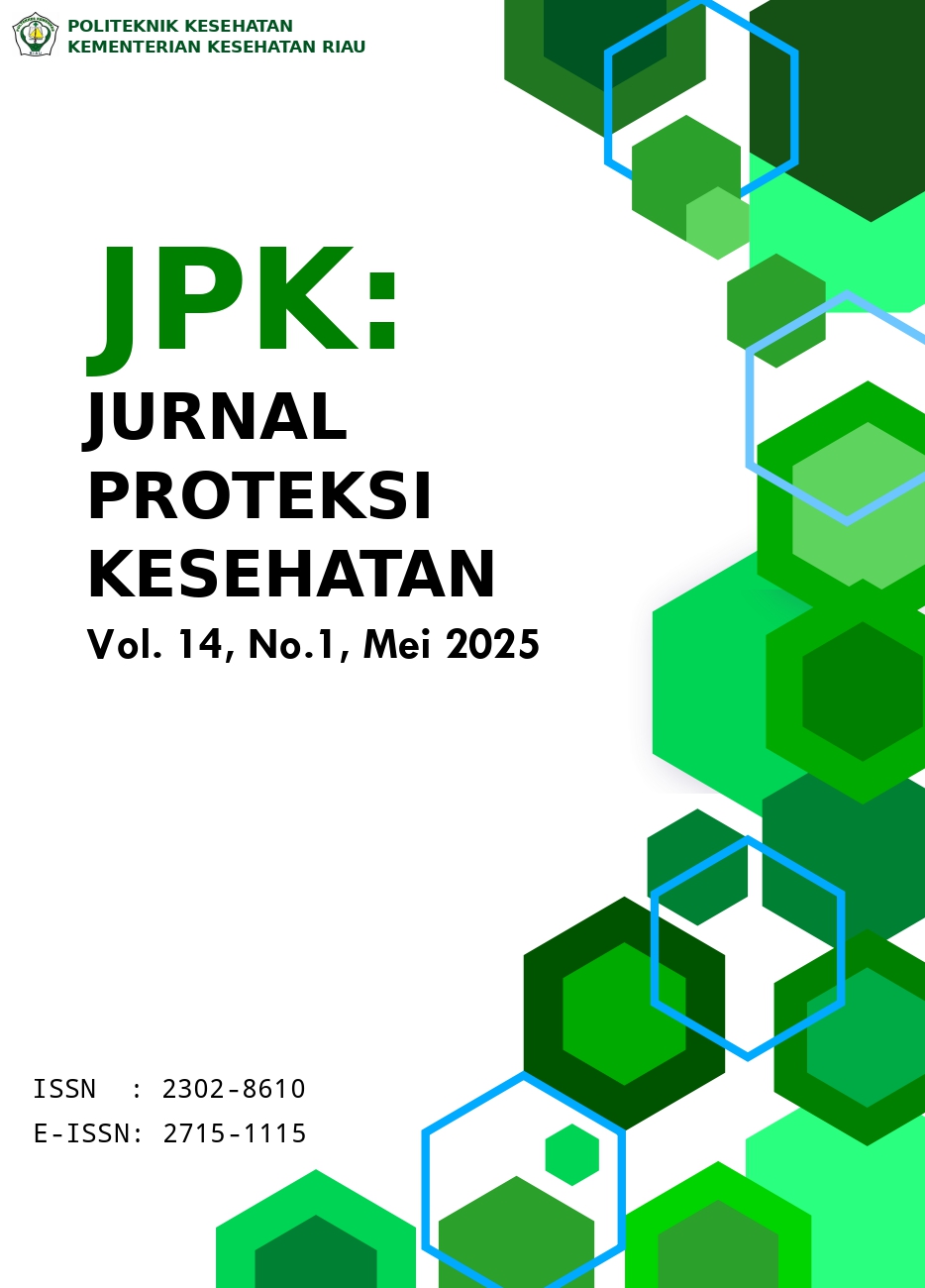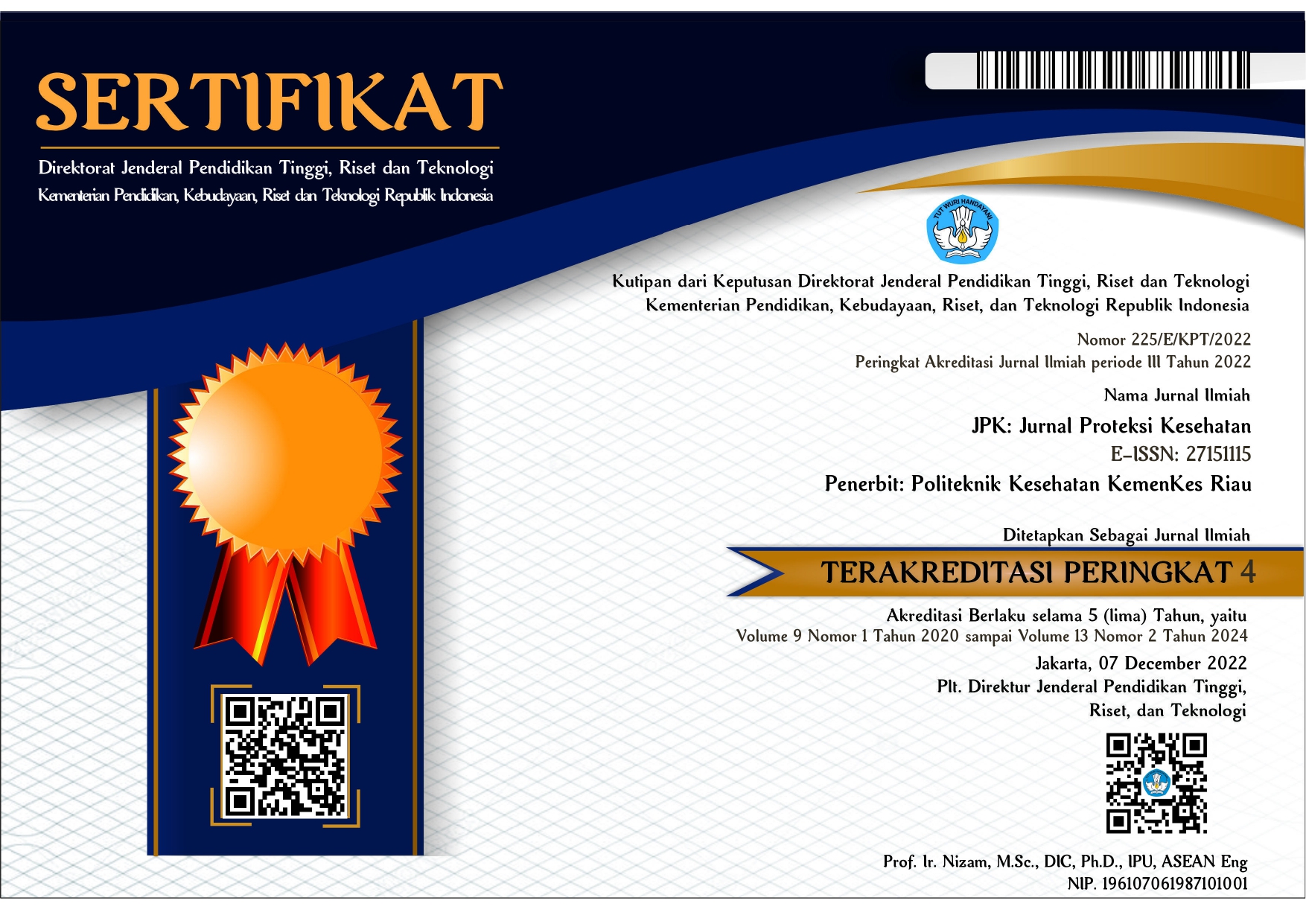Family Coping Mechanisms in Response to Stunting Events in Toddlers in the Working Area of Pekanheran Health Center
Abstract
Stunting remains a public health issue in Indonesia, with an estimated 27.7% of children under five years old experiencing stunting. The role of parents and family is very important in meeting the needs of children and providing them with good growth and development, so that children can live well. A positive family coping approach is very important. Without effective family coping mechanisms, the family's functions cannot be adequately achieved. Desa Air Jernih is a Stunting Locus Village in 2024. The purpose of this study is to determine the relationship between family coping mechanisms and the incidence of stunting in toddlers, using a total population technique involving 89 families with toddlers and employing three types of questionnaires: a respondent characteristic questionnaire, a toddler height measurement, and a parental coping mechanism questionnaire using the F-COPES instrument. Based on statistical testing using the chi-square method, a p-value of 0.282 was obtained, indicating that there is no relationship between family coping mechanisms and the incidence of stunting.
References
[2] B. P. Dan and P. K. K. R. tahun 2018., . “Riset Kesehatan Dasar (Riskesdas) (2018),” 2019. [Online]. Available: https://repository.badankebijakan.kemkes.go.id/id/eprint/3514/1/Laporan Riskesdas 2018 Nasional.pdf
[3] A. F. D. Cahyati, R. D. P. Reza, H. Holifah, M. Sholeh, and S. Suhartono, “Upaya Pencegahan Stunting Menuju Banjardowo Zero Stunting Melalui Penyuluhan dan Pendistribusian Stunting Book,” J. Bina Desa, vol. 5, no. 2, pp. 231–239, 2023.
[4] H. N. Rahman et al., Cegah Stunting sebagai Upaya Wujudkan Generasi Emas. Penerbit NEM, 2023.
[5] A. Harimurti, G. W. Nugroho, L. D. Handayani, A. Murtyoastuti, and B. A. Amorrista, Psikologi Dan Stunting Belajar Dari Kaliagung Yogyakarta. Sanata Dharma University Press, 2024.
[6] A. A. Mita and O. Rina, “Pendidikan Orang Tua, Pengetahuan Gizi Ibu Mengenai Tumbuh Kembang Anak dan Status Gakin dengan Kejadian Stunting Pada Balita Usia 24-59 Bulan di Wilayah Kerja Puskesmas Karangmojo II Gunungkidul.” Poltekkes Kemenkes Yogyakarta, 2019.
[7] S. Maryam, “Strategi coping: Teori dan sumberdayanya,” J. konseling andi matappa, vol. 1, no. 2, pp. 101–107, 2017.
[8] G. Gandana, E. H. Mulyana, and R. Rosmeilani, “Hubungan Pola Asuh Orang Tua Dengan Kejadian Stunting Pada Anak Usia Dini,” J. Early Child. Incl. Educ., 2023.
[9] U. Ramlah, “Gangguan kesehatan pada anak usia dini akibat kekurangan gizi dan upaya pencegahannya,” Ana’Bulava J. Pendidik. Anak, vol. 2, no. 2, pp. 12–25, 2021.
[10] S. Heni, “Optimalisasi mekanisme koping ibu dalam program pemberian makanan tambahan (PMT) untuk pencegahan stunting,” in Proceedings of the National Health Scientific Publication Seminar, 2024, pp. 839–845.
[11] D. Agustanti et al., Buku Ajar Keperawatan Keluarga. Mahakarya Citra Utama Group, 2022.
[12] S. Ningsih, D. I. Puspitasari, F. N. Isnaeni, and Z. Setiyaningrum, “Hubungan Praktik Pemberian Makan Dan Hygiene Sanitasi Lingkungan Dengan Kejadian Stunting Pada Balita Usia 24-59 Bulan,” Pontianak Nutr. J., vol. 6, no. 2, 2023.
[13] T. Mulyaningsih, I. Mohanty, V. Widyaningsih, T. A. Gebremedhin, R. Miranti, and V. H. Wiyono, “Beyond personal factors: Multilevel determinants of childhood stunting in Indonesia.,” PLoS One, vol. 16, no. 11, p. e0260265, 2021, doi: 10.1371/journal.pone.0260265.
[14] I. Amadu et al., “Risk factors associated with the coexistence of stunting, underweight, and wasting in children under 5 from 31 sub-Saharan African countries.,” BMJ Open, vol. 11, no. 12, p. e052267, Dec. 2021, doi: 10.1136/bmjopen-2021-052267.
[15] S. Budge, A. H. Parker, P. T. Hutchings, and C. Garbutt, “Environmental enteric dysfunction and child stunting.,” Nutr. Rev., vol. 77, no. 4, pp. 240–253, Apr. 2019, doi: 10.1093/nutrit/nuy068.
[16] Y. Q. Zhang, H. H. Wu, X. N. Zong, and H. Li, “[Survey on the influential factors of stunting among children under seven years of age in nine cities of China].,” Zhonghua er ke za zhi = Chinese J. Pediatr., vol. 59, no. 9, pp. 743–751, Sep. 2021, doi: 10.3760/cma.j.cn112140-20210225-00157.
[17] E. A. Hastuti, S. Suryani, and A. Sriati, “Masalah psikososial ibu dengan anak stunted: studi deskriptif kualitatif,” J. Keperawatan’Aisyiyah, vol. 9, no. 2, pp. 173–186, 2022.
[18] I. G. Pratiwi, “Edukasi Tentang Gizi Seimbang Untuk Ibu Hamil Dalam Pencegahan Dini Stunting,” J. Pengabdi. Masy. Sasambo, vol. 1, no. 2, pp. 62–69, 2020.
[19] N. W. D. Ekayanthi and P. Suryani, “Edukasi gizi pada ibu hamil mencegah stunting pada kelas ibu hamil,” J. Kesehat., vol. 10, no. 3, pp. 312–319, 2019.
[20] R. Yunitasari, Y. N. E. Sary, T. Ekasari, and N. Hikmawati, “Hubungan Pola Asuh Orang Tua Dengan Kejadian Stunting Pada Balita Di Desa Jarit,” J. Kesehat. Al-Irsyad, vol. 16, no. 2, pp. 1–11, 2023.












